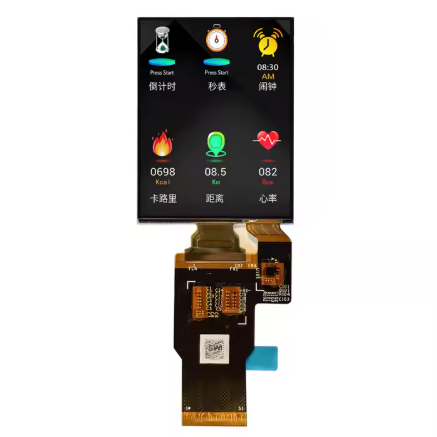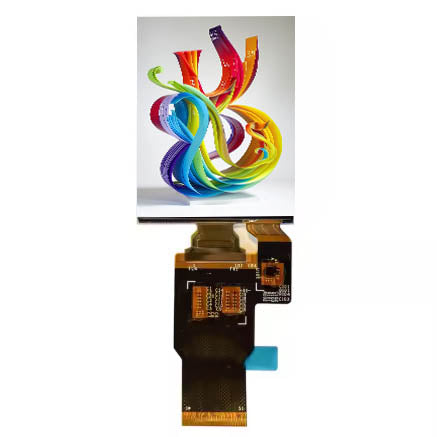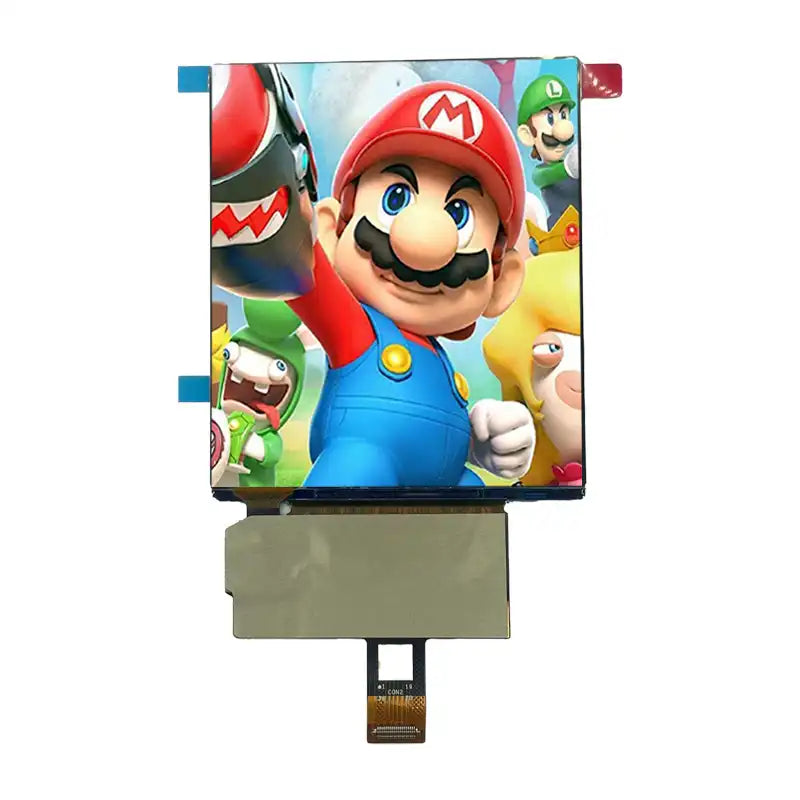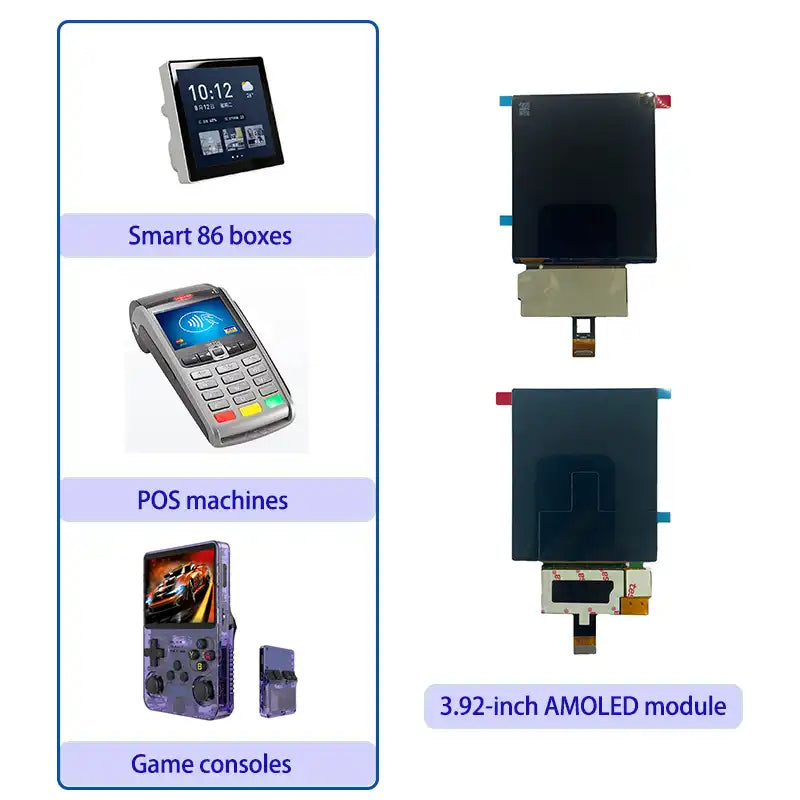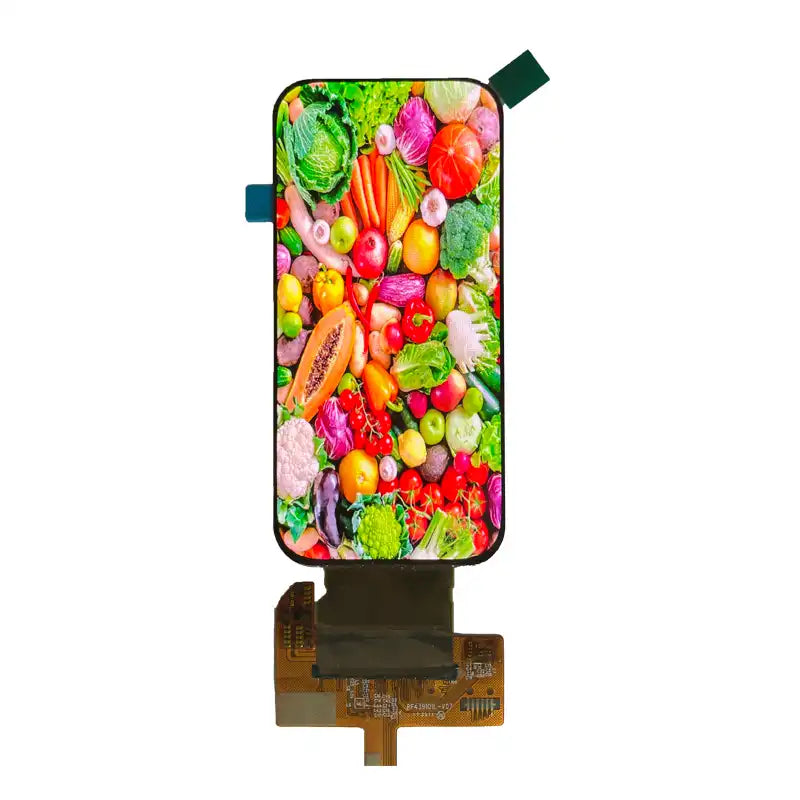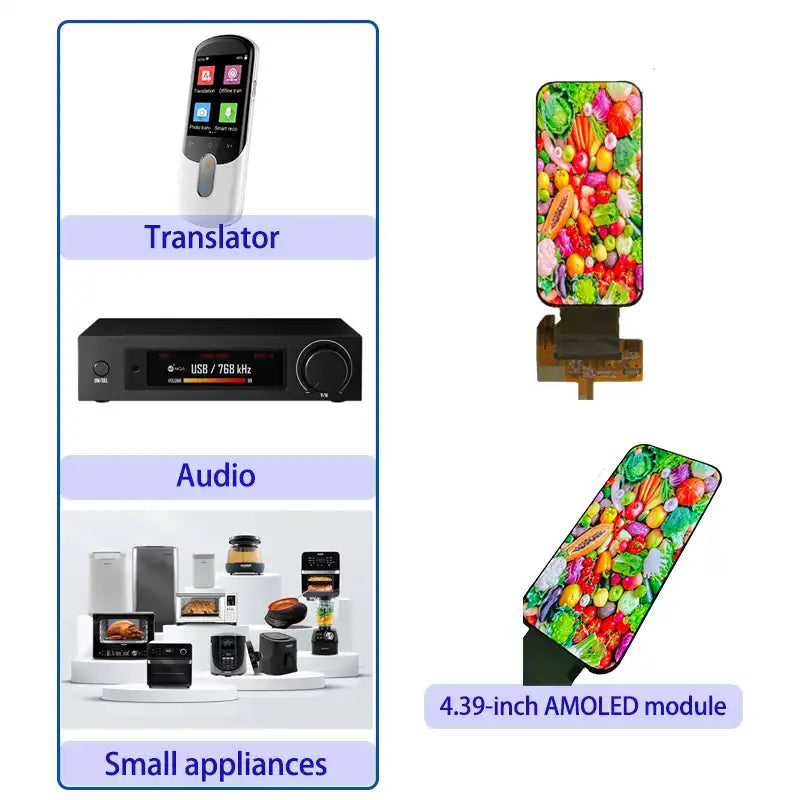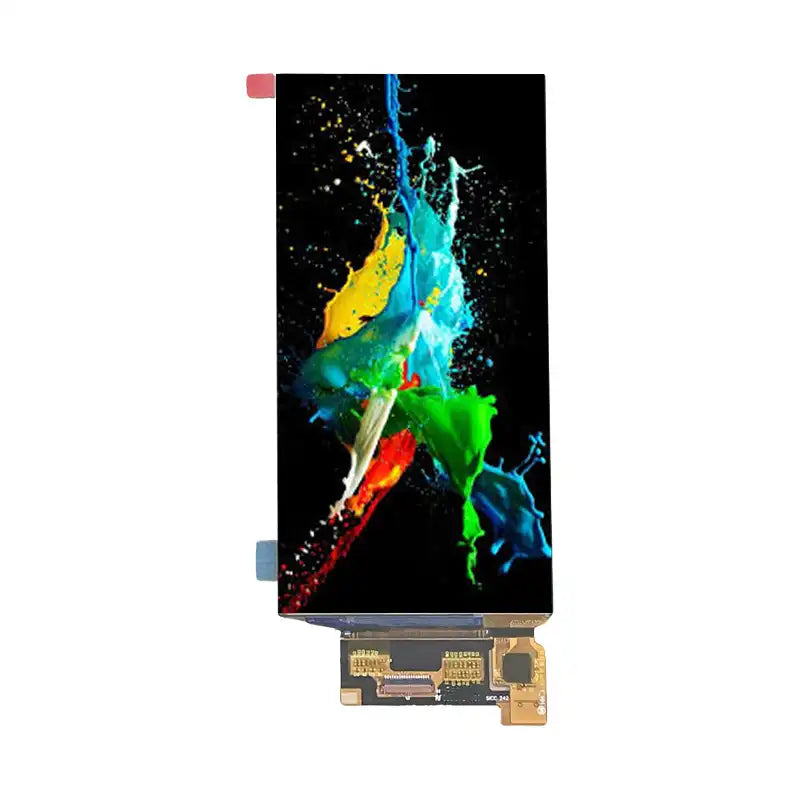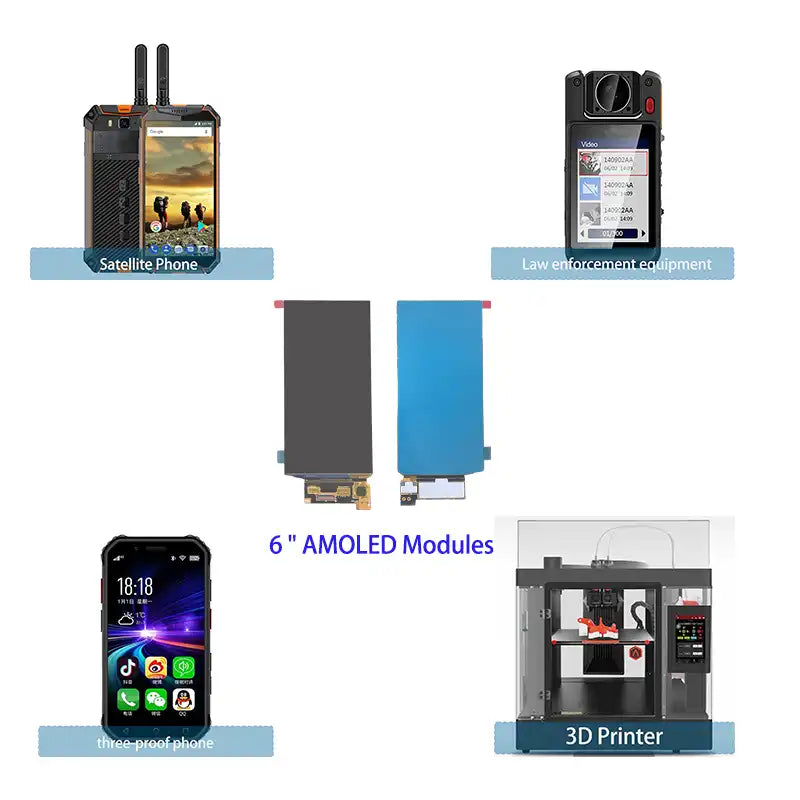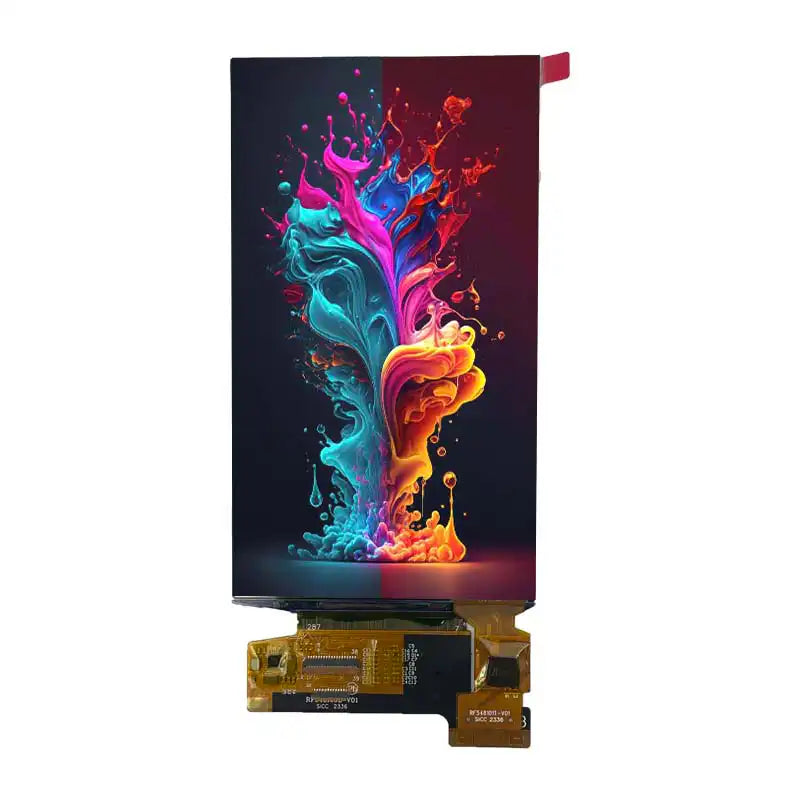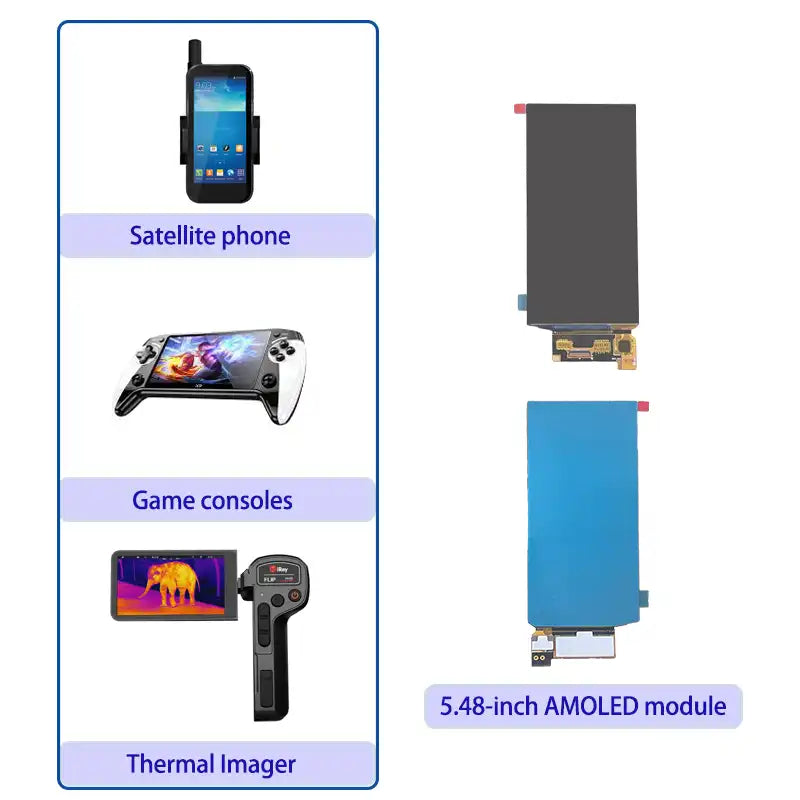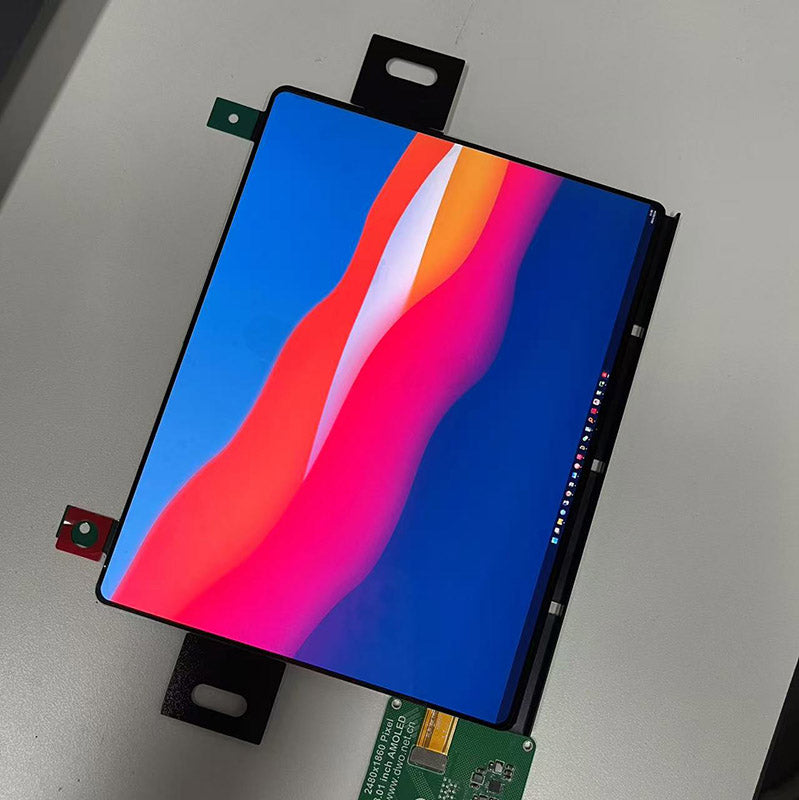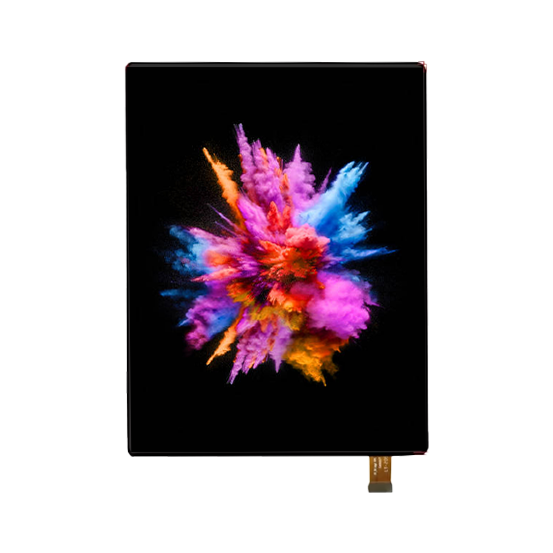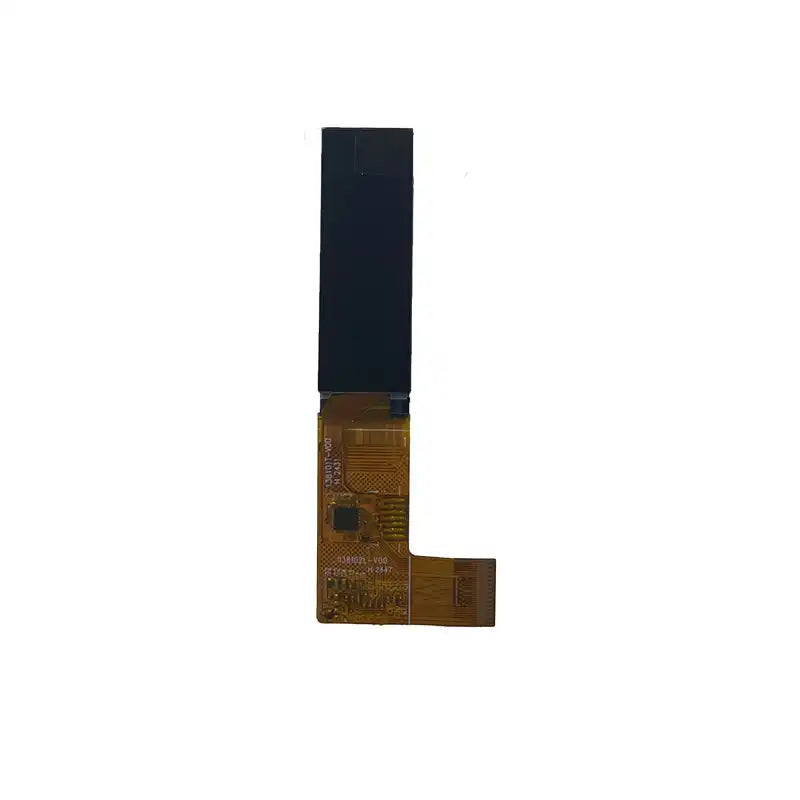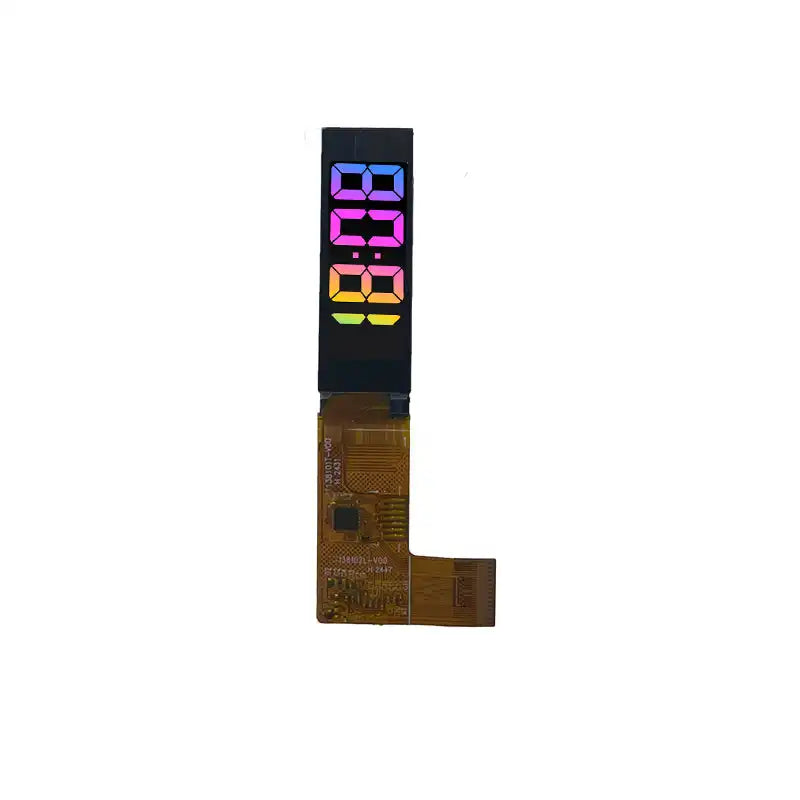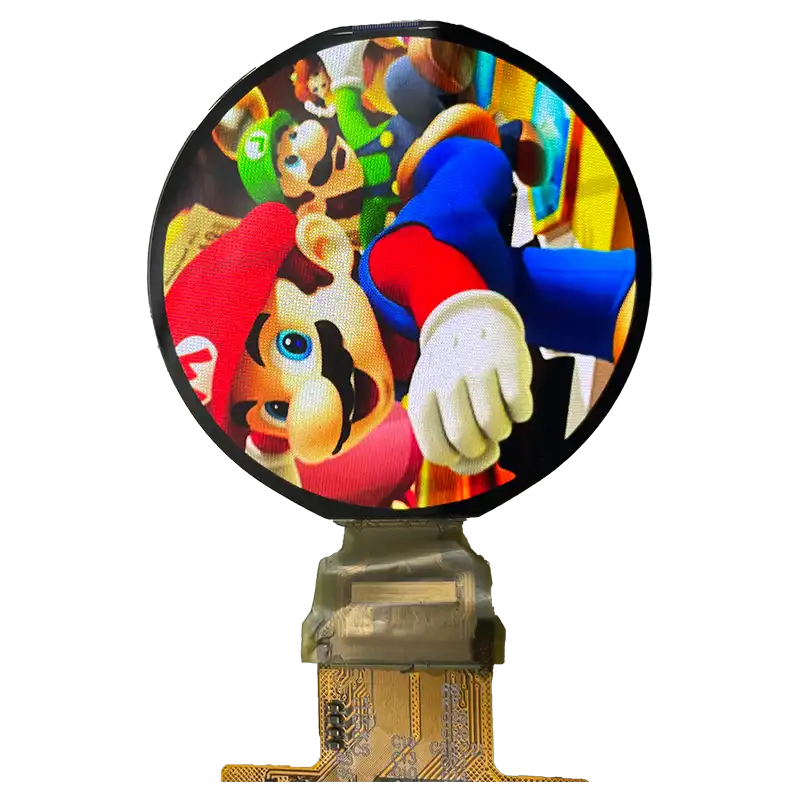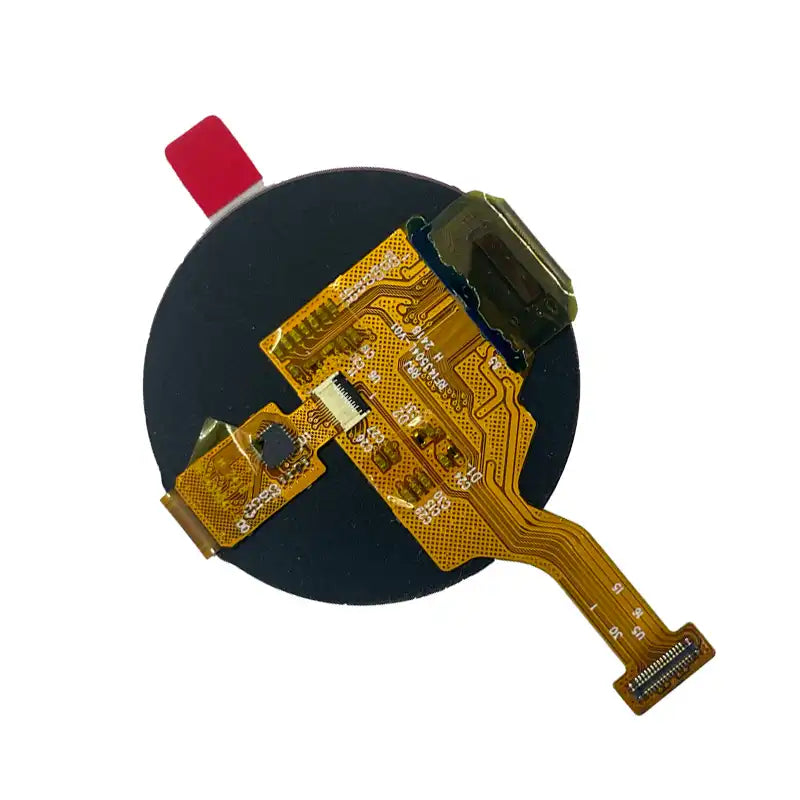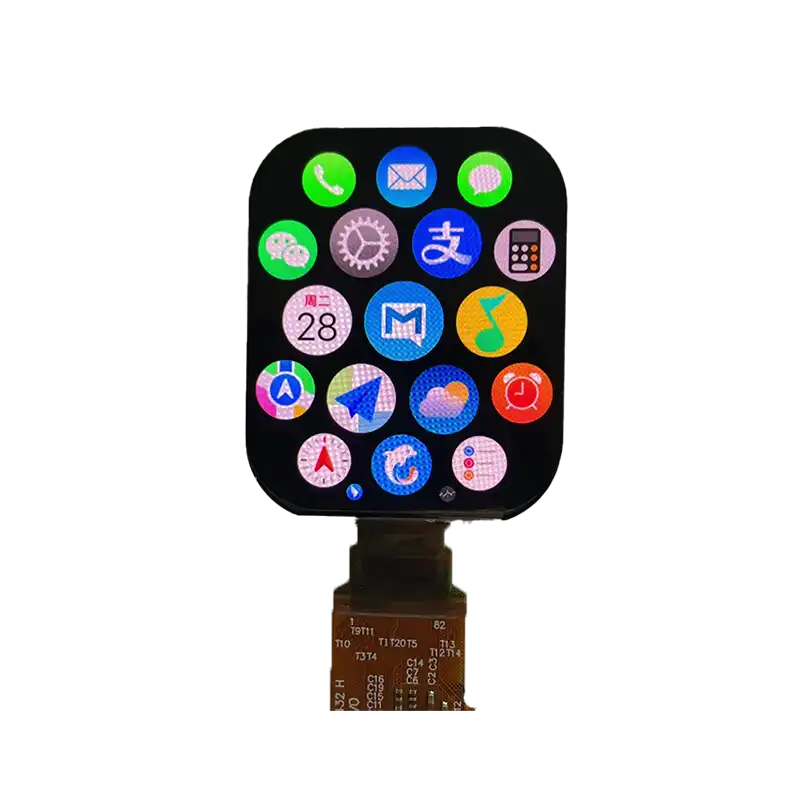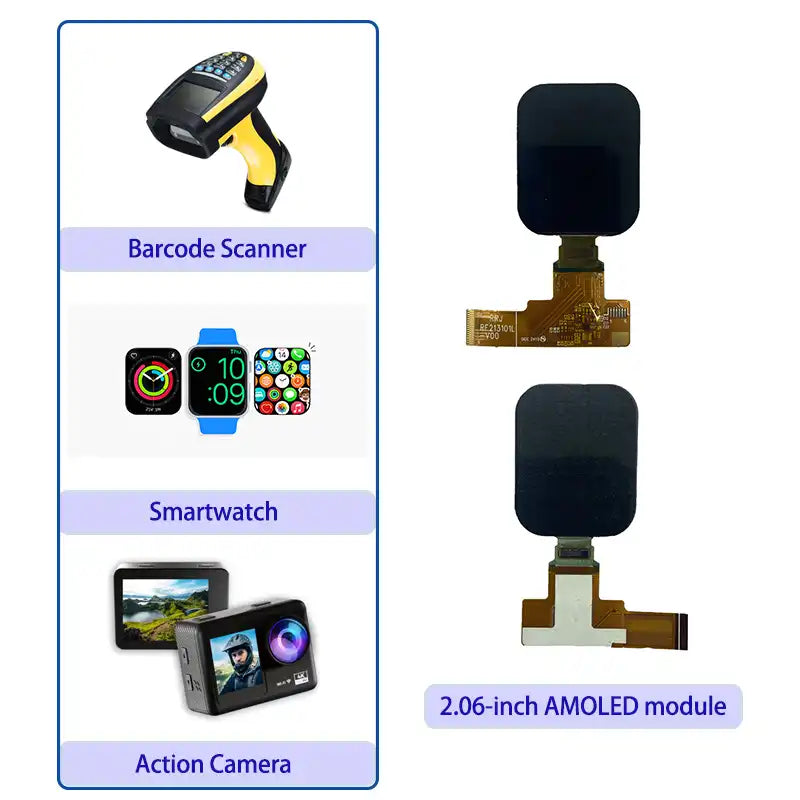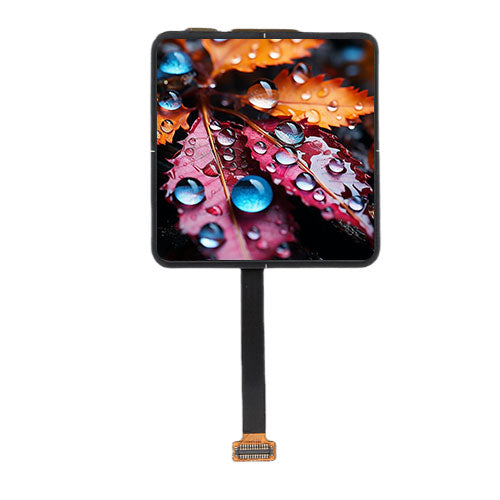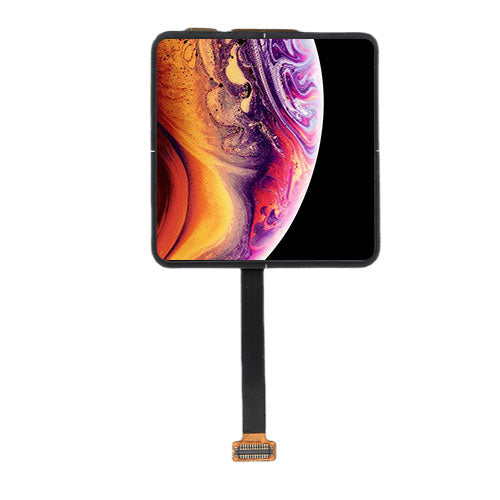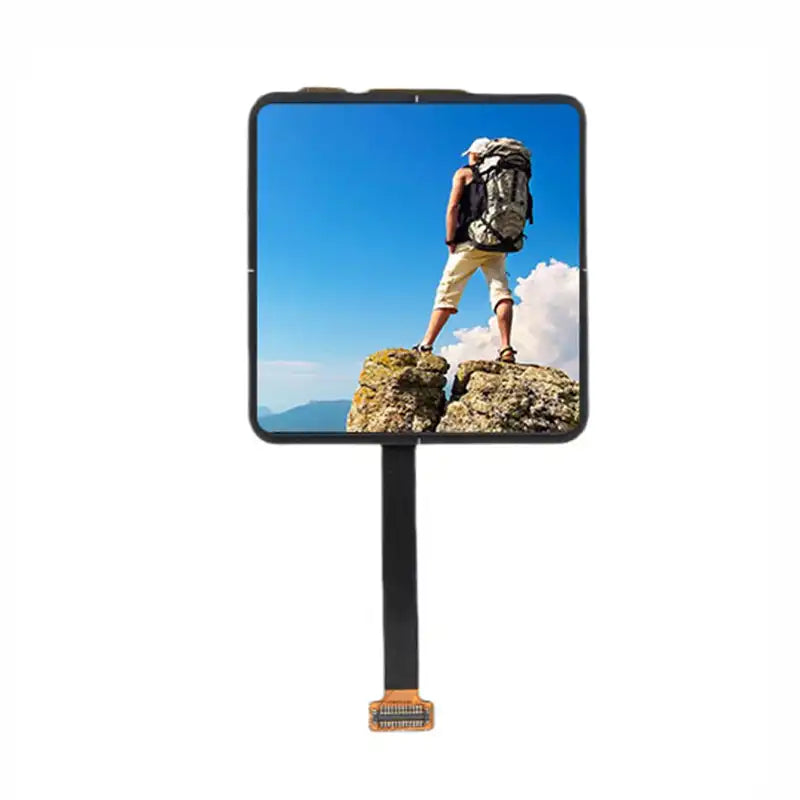
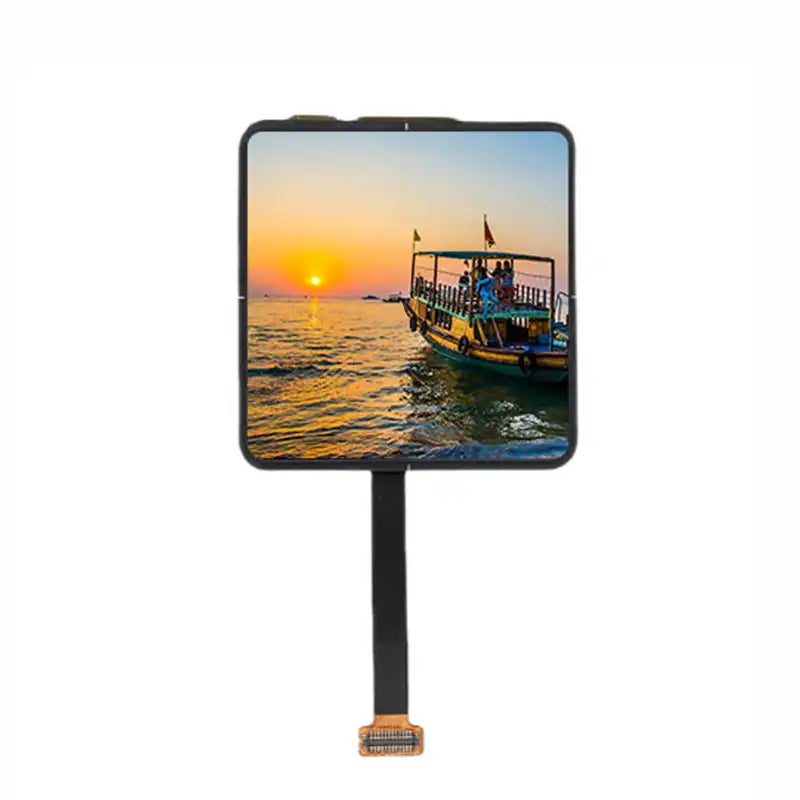
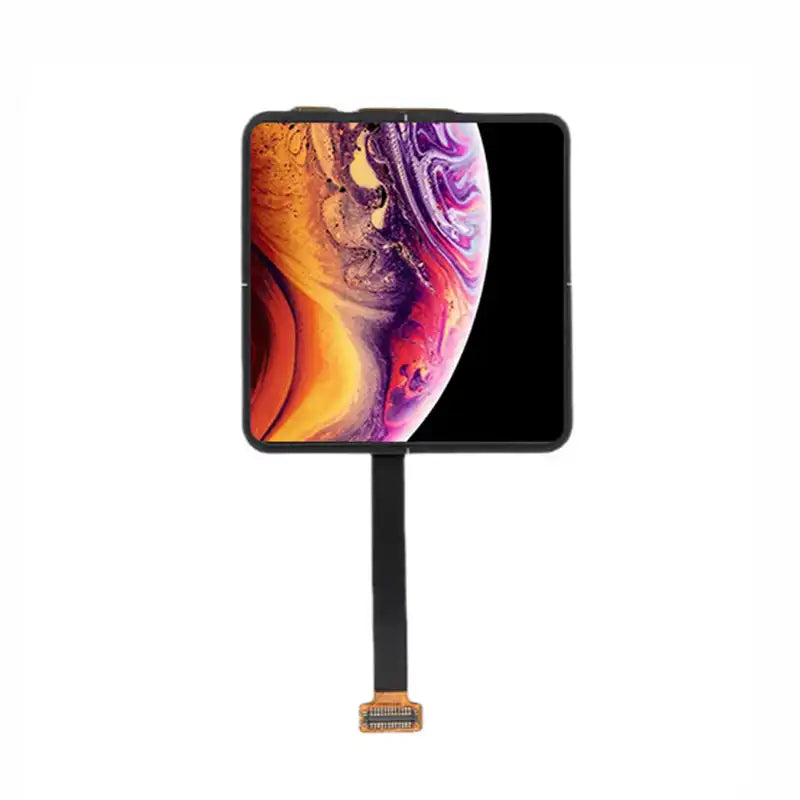
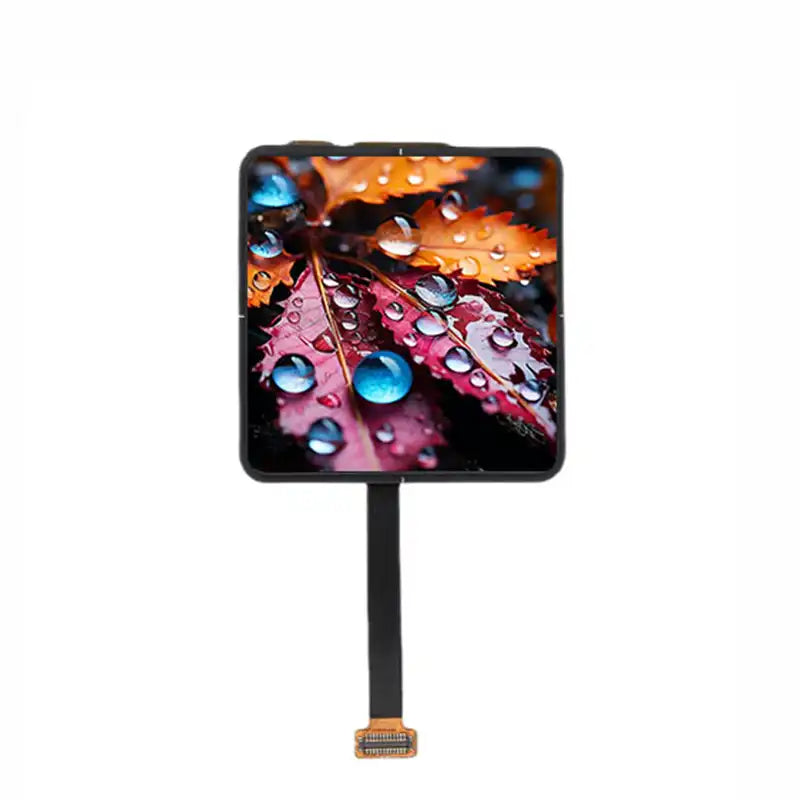
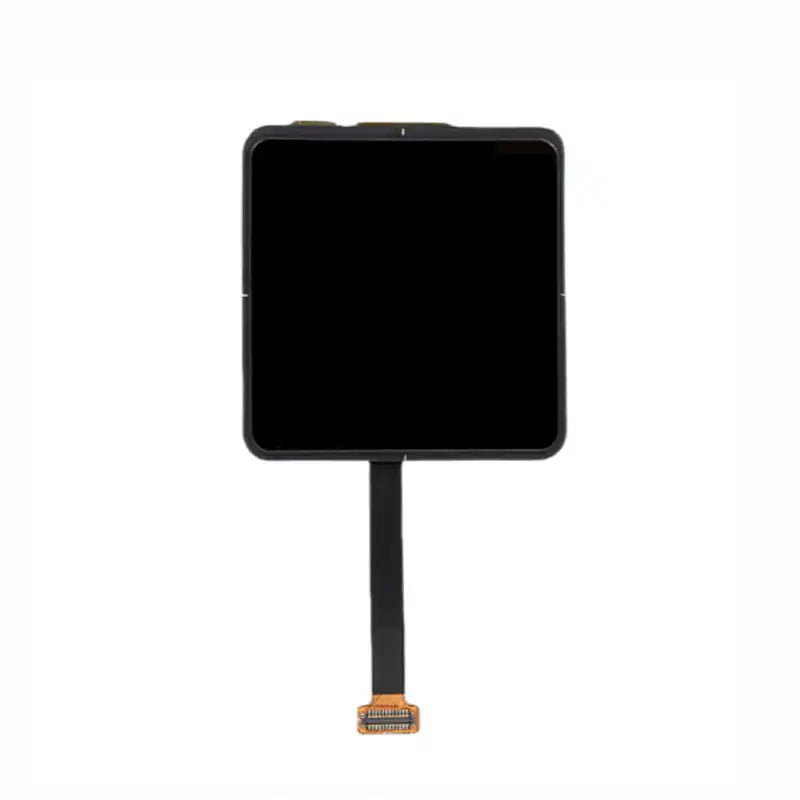
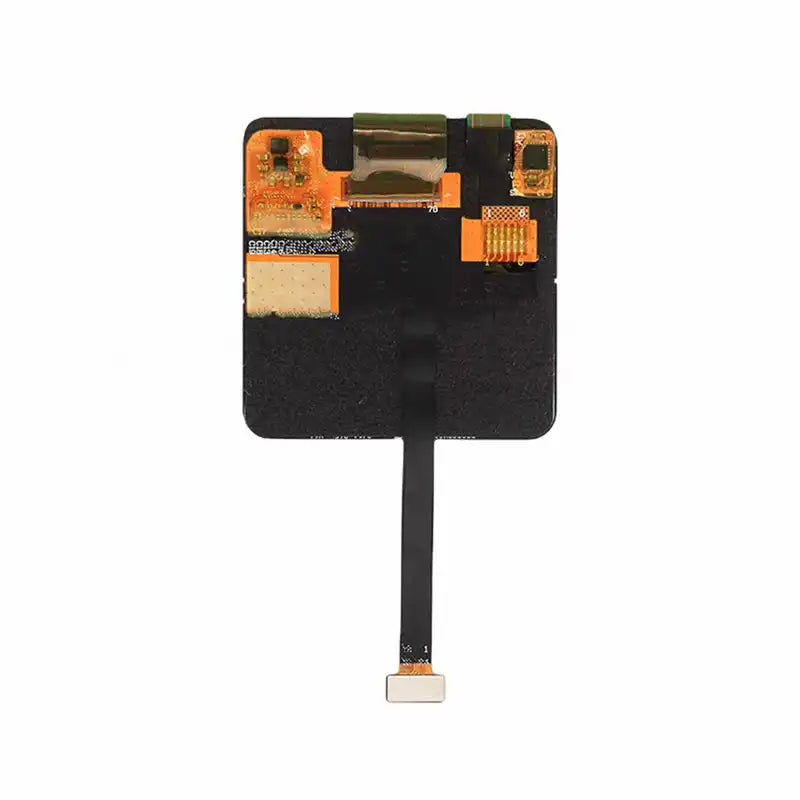
2.01 INCH AMOLED Display Module – Square High-Resolution Display
High-Performance AMOLED Display Solutions
The 2.01-inch AMOLED module (Model: BR201CSK-001) from Shenzhen Brownopto Technology Co., Ltd. is a high-resolution, square-format display solution ideal for smartwatches, wearables, and compact user interfaces. Featuring a sharp 460 × 460 resolution and vibrant AMOLED technology, this module delivers deep blacks, excellent contrast, and superior power efficiency. With a wide 88° viewing angle in all directions and operating temperature from -20°C to +60°C, it is suitable for demanding indoor and outdoor applications. Designed with a QSPI interface and driven by the CO5300 IC, it offers reliable performance for modern embedded systems.
Key Features
- Display Size: 2.01 inch diagonal
- Resolution: 460 × 460 pixels
- Active Area: 35.88 × 35.88 mm
- Viewing Area: 36.08 × 36.08 mm
- Module Size: 37.88 × 39.08 × 0.81 mm
- Technology: AMOLED (Active Matrix OLED)
- Display Colors: 16.7 million
- Pixel Arrangement: RGB Stripe
- Interface: QSPI (Quad Serial Peripheral Interface)
- Driver IC: CO5300
- Power IC: BV6802
- Viewing Angle: 88° all directions (Min)
- Operating Temp.: -20°C to +60°C
- Storage Temp.: -30°C to +70°C (inferred from industry standard)
Technical Specifications
| Parameter | Value |
|---|---|
| Display Size | 2.01 inch |
| Resolution | 460 × 460 pixels |
| Dot Matrix | 460 × 3(R.G.B) × 460 |
| Active Area | 35.88 × 35.88 mm |
| Viewing Area | 36.08 × 36.08 mm |
| Module Size | 37.88 × 39.08 × 0.81 mm |
| Assembly Size | 38.50 × 39.20 × 2.28 mm |
| Pixel Size | 0.1335 × 0.1335 mm |
| Technology | AMOLED |
| Display Colors | 16.7 million |
| Pixel Arrangement | RGB Stripe |
| Interface Type | QSPI |
| Display Driver IC | CO5300 |
| Power IC | BV6802 |
| Viewing Angle | L88/R88/T88/B88 (Min) |
| Operating Temperature | -20°C to +60°C |
| Storage Temperature | -30°C to +70°C (typical for AMOLED modules) |
| Recommended Viewing Direction | All directions |
| Weight | TBD |
| Compliance | RoHS |
Interface Pinout (24-pin FPC)
The module uses a 24-pin flexible printed circuit (FPC) with the following pin configuration:
| Pin # | Symbol | Description |
|---|---|---|
| 1 | VCI_EN | Power Enable Signal |
| 2-5 | QSPI_SI03~SI00 | QSPI Data Lines (4-bit) |
| 6 | QSPI_CLK | QSPI Clock |
| 7 | LCD_CS | LCD Chip Select |
| 8 | LCD_RST | LCD Reset |
| 9 | LCD_TE | LCD Tearing Effect Signal |
| 10 | GND | Ground |
| 11-12 | NC | No Connect |
| 13 | LCD_VDD3.3V | LCD Power Supply (3.3V) |
| 14 | LCD_IOVCC3.3V | LCD I/O Power (3.3V) |
| 15 | VBAT | Battery Input |
| 16 | GND | Ground |
| 17 | CTP_INT | Capacitive Touch Panel Interrupt |
| 18 | CTP_RST | Capacitive Touch Panel Reset |
| 19 | CTP_SCL | Touch Panel I²C Clock |
| 20 | CTP_SDA | Touch Panel I²C Data |
| 21 | GND | Ground |
| 22 | CTP_VDD 3.3V | Touch Panel Power (3.3V) |
| 23 | CTP_IOVCC3.3V | Touch Panel I/O Power (3.3V) |
| 24 | NC(MTP) | No Connect (MTP) |
Application Scenarios
The 2.01-inch AMOLED module is ideal for applications requiring a square, high-resolution display in a compact form factor:
- Wearables: Square smartwatches, fitness trackers, health monitors
- Portable Devices: Handheld terminals, smart remotes, IoT controllers
- Consumer Electronics: Audio players, smart home hubs
- Industrial HMIs: Compact control panels, diagnostic tools
Handling Precautions
- Avoid mechanical pressure or bending on the display surface.
- Use ESD-safe tools and grounding during handling and assembly.
- Clean only with IPA and lint-free cloth; avoid abrasive materials.
- Follow the recommended power-on/off sequence (refer to full datasheet).
- Store in a dry, dark environment to prevent OLED degradation.
Resource download: specification
Ready to Integrate the BR201CSK-001?
Contact us for samples, datasheets, or technical support.
Request a Sample
Featured collection
OLED Custom Solutions
Our company offers custom-made OLED solutions, tailored to your unique display needs, ensuring high-quality, precision, and satisfaction.
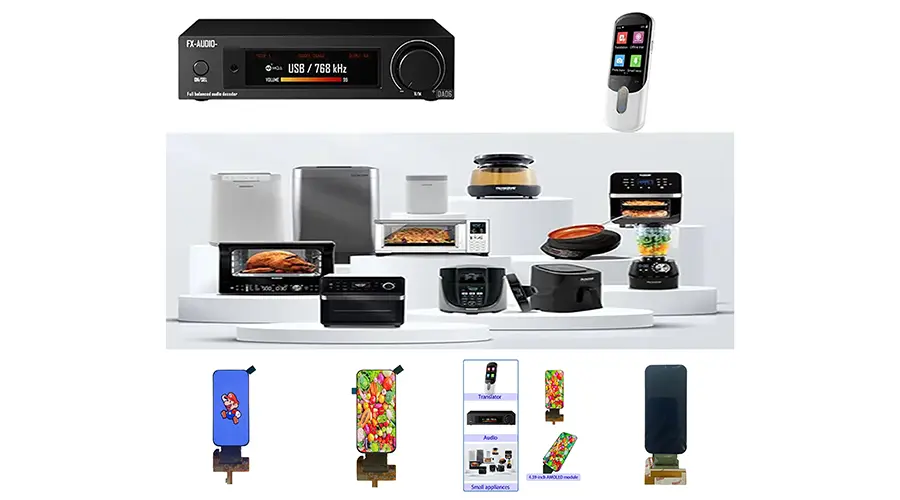
Size & Shape Customization
Tailor AMOLED dimensions and shapes (round, irregular, flexible/foldable) for wearables, phones, or industrial devices. Adjust form factors to match product design needs.
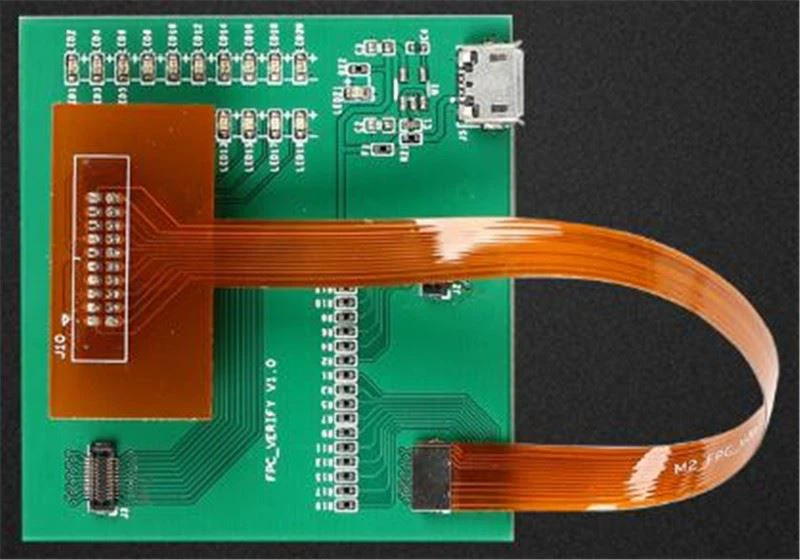
Resolution & Pixel Optimization
Offer HD to 4K+ resolutions and pixel densities for clarity. Enhance color accuracy and contrast for premium smartphones, tablets, VR/AR, and high-end displays.
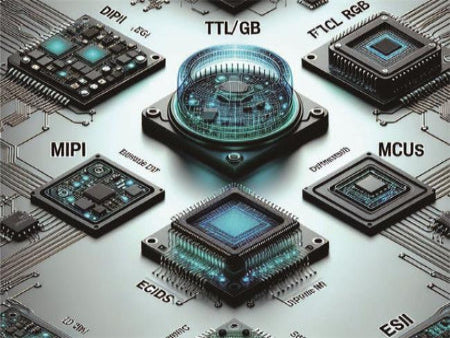
Interface & Driver Integration
Configure MIPI DSI/LVDS interfaces and driver ICs for seamless hardware compatibility. Add capacitive touch support for mobile, automotive, or industrial systems.
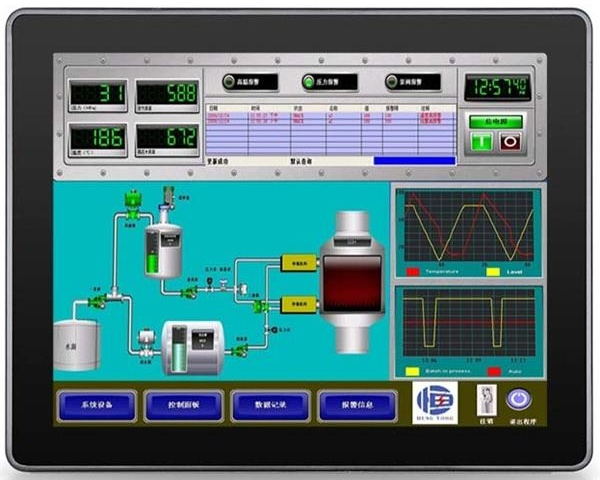
Optical & Durability Enhancements
Add anti-glare coatings, higher brightness, and IP-rated protection. Optimize for extreme temperatures, ensuring durability in outdoor, military, or harsh environments.
FAQ
Questions about OLED Displays
1. What factors affect the cost of a custom OLED?
- Size & complexity: Larger or flexible designs increase costs.
- Resolution/pixel density: Higher specs (e.g., 4K) require advanced manufacturing.
- Material quality: High-end materials (e.g., anti-glare coatings) add to pricing.
- Minimum order quantity (MOQ): Smaller batches may incur higher per-unit costs.
2. How long does it take to produce a custom OLED?
- Lead time: Typically 4–8 weeks after design approval, depending on complexity.
- Prototyping: Sample production takes 2–3 weeks for verification.
- Mass production: Delays may occur for high-volume orders or specialized components.
3. Can I request a flexible or foldable OLED?
- Yes, but with limitations:
- Flexibility: Curved designs require specialized substrates (e.g., polyimide).
- Durability: Foldable OLEDs need reinforced layers to prevent cracking.
- Cost: Flexible/foldable options are 20–50% more expensive than rigid panels.
4.How is the reliability of custom OLEDs tested?
- Key tests:
- Lifetime testing: Accelerated aging (e.g., 85°C/85% RH for 1,000 hours).
- Mechanical stress: Flexibility/folding endurance (100,000+ cycles for foldables).
- Environmental resistance: UV exposure, humidity, and thermal shock testing.
- Performance metrics:
- Luminance retention: >90% brightness after 10,000 hours.
- Color stability: Delta E < 3 for consistent color accuracy.
- Supplier accountability: Reputable manufacturers provide test reports and warranties (e.g., 2–5 years).
5.What industries benefit most from custom OLEDs?
- Consumer electronics: Smartphones, wearables, tablets.
- Industrial/medical: Control panels, diagnostic displays.
- Automotive: Dashboard screens, infotainment systems.
- Retail/entertainment: Digital signage, AR/VR headsets.

